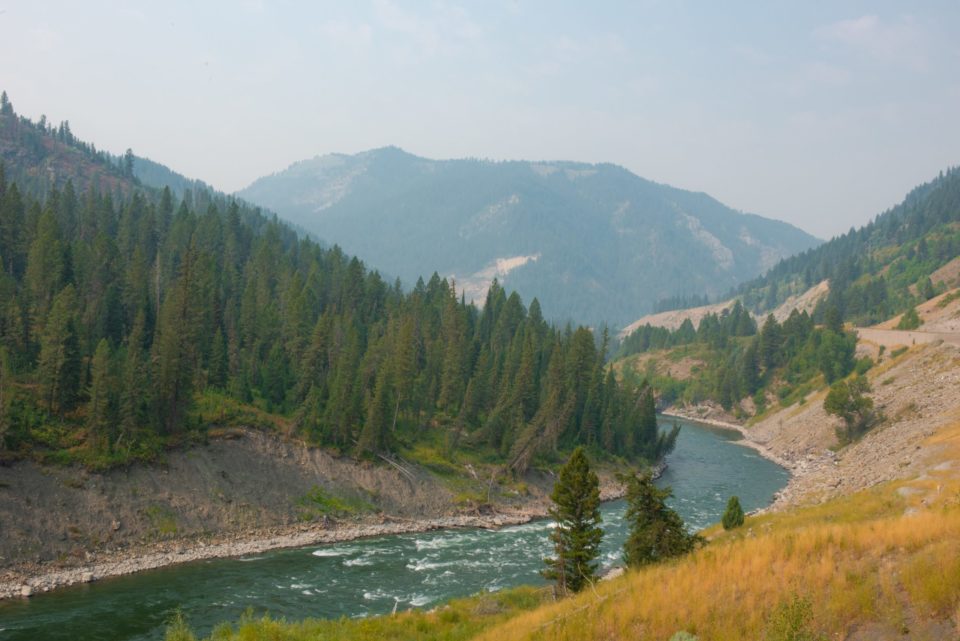For the last 35 years I’ve been covering what we call the “salmon wars” in the Pacific Northwest, writing so many stories about salmon heading toward extinction that I’ve lost count.
The decline occurred year by year while we spent $18 billion on what’s politely called “mitigation.” That meant building fish passages around dams without fish ladders or snatching fish from warming rivers and trucking them around dams before they died. Nothing has ever worked.
The truth is that some dams must be removed if salmon are to have a prayer of leaving the ocean and swimming up rivers to spawn.
Now, finally, there is a sign of hope for the fish even as Snake River salmon in the states of Idaho, Oregon and Washington remain close to extinction.
There’s hope because the Biden administration has been in settlement talks with legal plaintiffs the state of Oregon, the Nez Perce tribe, and sporting, fishing and environmental groups. They have sued the federal government five times over its failed attempts to save salmon under the Endangered Species Act, and each time the government has lost.
Meanwhile, spring chinook, sockeye and steelhead trended toward extinction in the Snake River watershed, which includes their best remaining habitat in the lower 48 states.
In 1997, my newspaper, the Idaho Statesman, wrote a series of editorials calling for breaching the four lower Snake dams in Washington to restore salmon abundance. The editorials urged paying for the impacts on dam removal on power supply, grain transportation and irrigation as a more effective and cheaper fix than continuing failed policies. The federal government chose to spend $18 billion on those failed policies.
But now, the Biden administration and others recognize that restoring our rivers is an issue of tribal justice as well as the only real solution. For far too long, say biologists Rick Williams of Idaho and Jim Lichatowich of Oregon, we have treated salmon as an industrial commodity. Our reliance on hatcheries while we continue to fragment and destroy habitat has been at the root of the fish’s struggles.
But if we remove the chief obstacles that block the fish from their cool, high elevation-habitat, the biologists say, these wild, adaptable fish will recover themselves. “Because of our long reliance on substitute nature, we’ve almost lost faith in salmon to reproduce itself in quality habitat,” Williams says.
It has taken decades, but much of the public has come to understand the folly of our industrial fixes for salmon. In the May Republican primary, U.S. Rep. Mike Simpson won reelection by a landslide after introducing a plan to breach the four dams to save salmon and make impacted communities whole. His losing opponent opposed breaching the dams.
More significant, Washington Democratic Sen. Patty Murray, who has long resisted any salmon recovery plan that included removing the four dams, joined with Washington Democratic Gov. Jay Inslee in endorsing a study of how to replace the services provided by the dams.
The study showed that breaching the four dams was the most promising approach to salmon recovery, though it would require spending from $10.3 billion to $27.2 billion to replace the electricity from the dams’ hydropower, plus grain shipping and irrigation.
Murray is the most powerful Northwestern senator in Congress. But she will need the rest of the Democratic delegation to join her if she is going to turn the tide.
Most of all, Washington Democratic Sen. Maria Cantwell and Oregon Democratic Rep. Peter DeFazio will need to join Murray, Simpson, Oregon Democratic Rep. Earl Blumenauer, and outgoing Oregon Gov. Kate Brown, if legislation is going to pass this year.
The resilience of the wild Snake salmon and the quality of the high-elevation spawning habitat has led biologists to predict the fish will reverse the 40-year extinction trend if the four dams are removed. This might just be the year that rivers and salmon are set free, ending the salmon wars. Here’s hoping.
Rocky Barker is a contributor to Writers on the Range, writersontherange.org, a nonprofit dedicated to spurring lively conversation about the West. He is a retired reporter who lives in Idaho and is the author of Saving All the Parts: Reconciling Economics and the Endangered Species Act.
Source: advanture-journal


5 comments
Hello there! I could have sworn I’ve been to this site before but after browsing through some of the post I realized it’s new to me. Nonetheless, I’m definitely happy I found it and I’ll be book-marking and checking back frequently!
I’ve been surfing on-line greater than three hours nowadays, but I never discovered any fascinating article like yours. It?¦s lovely value enough for me. Personally, if all webmasters and bloggers made just right content material as you did, the web will likely be much more useful than ever before.
Good ?V I should definitely pronounce, impressed with your site. I had no trouble navigating through all the tabs as well as related information ended up being truly simple to do to access. I recently found what I hoped for before you know it at all. Reasonably unusual. Is likely to appreciate it for those who add forums or something, web site theme . a tones way for your client to communicate. Excellent task..
Hey! This post could not be written any better! Reading through this post reminds me of my old room mate! He always kept talking about this. I will forward this write-up to him. Pretty sure he will have a good read. Many thanks for sharing!
Thanks for your blog, nice to read. Do not stop.